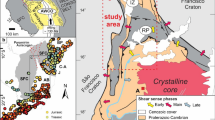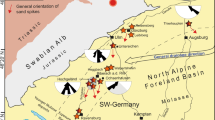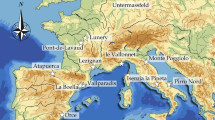Abstract
AT a meeting of the Geological Society of London, held on May 5, Mr. S. Hazzledine Warren read a paper entitled “A Natural Eolith Factory beneath the Thanet Sand.” The discovery of flints fractured by natural pressure at the base of the Eocene is not, however, a novel experience, as, in 1910, M. l'Abbé H. Breuil described (“Sur la présence d'Eolithes à la base de I'Eocène Parisien,” L'Anthropologie, t. xxi., 1910, pp. 385–408) in great detail, and by means of no fewer than seventy-six excellent illustrations, a series of flaked specimens of the same kind as those now put forward by Mr. Warren. Also, in 1914, I published an account of the flaked flints occurring in the Lower Eocene “Bull-head” bed at Bramford, near Ipswich (Proc. P.S.E.A., vol. i., part 4, pp. 397–404), and gave a full account of this peculiar deposit and the nature of the fractures exhibited by some of the contained flints. It will thus be seen that this question has been fully discussed and threshed out for many years past.
This is a preview of subscription content, access via your institution
Access options
Subscribe to this journal
Receive 51 print issues and online access
$199.00 per year
only $3.90 per issue
Buy this article
- Purchase on SpringerLink
- Instant access to full article PDF
Prices may be subject to local taxes which are calculated during checkout
Similar content being viewed by others
Author information
Authors and Affiliations
Rights and permissions
About this article
Cite this article
MOIR, J. Naturally Fractured Eocene Flints. Nature 105, 358 (1920). https://doi.org/10.1038/105358a0
Issue date:
DOI: https://doi.org/10.1038/105358a0



